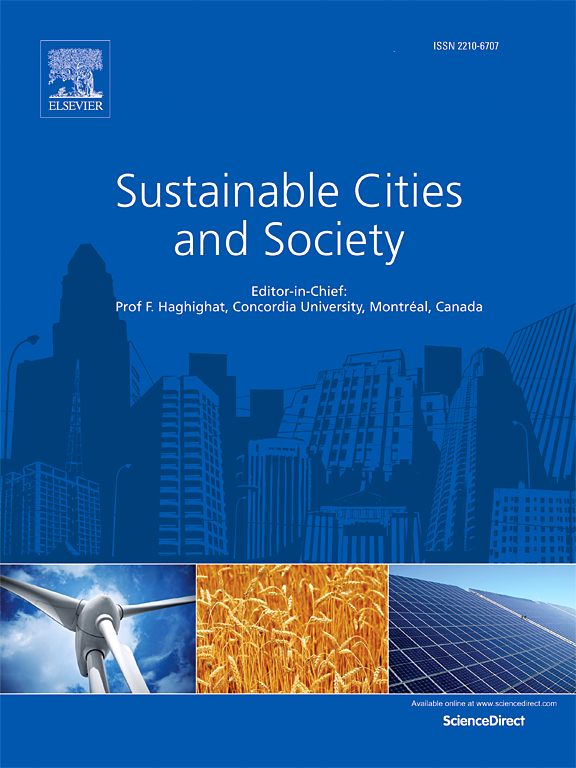Influence of number of sensors on source term estimation performance in complex urban neighborhood
IF 10.5
1区 工程技术
Q1 CONSTRUCTION & BUILDING TECHNOLOGY
引用次数: 0
Abstract
When a hazardous substance leakage accident occurs, Source Term Estimation (STE) can swiftly provide crucial information about the leaked substance to mitigate the threat posed to the environment and public safety. A well-designed sensor configuration serves as the cornerstone for accurately estimating source parameters. Most existing sensor configuration design methods optimize the layout of sensors according to a determined number of sensors. Few researchers analyze the impact of sensor numbers on STE performance, and it is still unclear how to obtain the optimal number of sensors for complex blocks. This paper selects three different types of typical residential communities as cases for modeling, studies the impact of sensor quantity on STE, and proposes corresponding methods for determining the optimal number of sensors. The results indicate that in complex urban neighborhoods, the number of sensors selected should be between 1 and 2 times the number of buildings, which allows emergency response personnel to have a high probability of searching for real sources within 1 to 2 nearby blocks based on STE results.
求助全文
约1分钟内获得全文
求助全文
来源期刊

Sustainable Cities and Society
Social Sciences-Geography, Planning and Development
CiteScore
22.00
自引率
13.70%
发文量
810
审稿时长
27 days
期刊介绍:
Sustainable Cities and Society (SCS) is an international journal that focuses on fundamental and applied research to promote environmentally sustainable and socially resilient cities. The journal welcomes cross-cutting, multi-disciplinary research in various areas, including:
1. Smart cities and resilient environments;
2. Alternative/clean energy sources, energy distribution, distributed energy generation, and energy demand reduction/management;
3. Monitoring and improving air quality in built environment and cities (e.g., healthy built environment and air quality management);
4. Energy efficient, low/zero carbon, and green buildings/communities;
5. Climate change mitigation and adaptation in urban environments;
6. Green infrastructure and BMPs;
7. Environmental Footprint accounting and management;
8. Urban agriculture and forestry;
9. ICT, smart grid and intelligent infrastructure;
10. Urban design/planning, regulations, legislation, certification, economics, and policy;
11. Social aspects, impacts and resiliency of cities;
12. Behavior monitoring, analysis and change within urban communities;
13. Health monitoring and improvement;
14. Nexus issues related to sustainable cities and societies;
15. Smart city governance;
16. Decision Support Systems for trade-off and uncertainty analysis for improved management of cities and society;
17. Big data, machine learning, and artificial intelligence applications and case studies;
18. Critical infrastructure protection, including security, privacy, forensics, and reliability issues of cyber-physical systems.
19. Water footprint reduction and urban water distribution, harvesting, treatment, reuse and management;
20. Waste reduction and recycling;
21. Wastewater collection, treatment and recycling;
22. Smart, clean and healthy transportation systems and infrastructure;
 求助内容:
求助内容: 应助结果提醒方式:
应助结果提醒方式:


